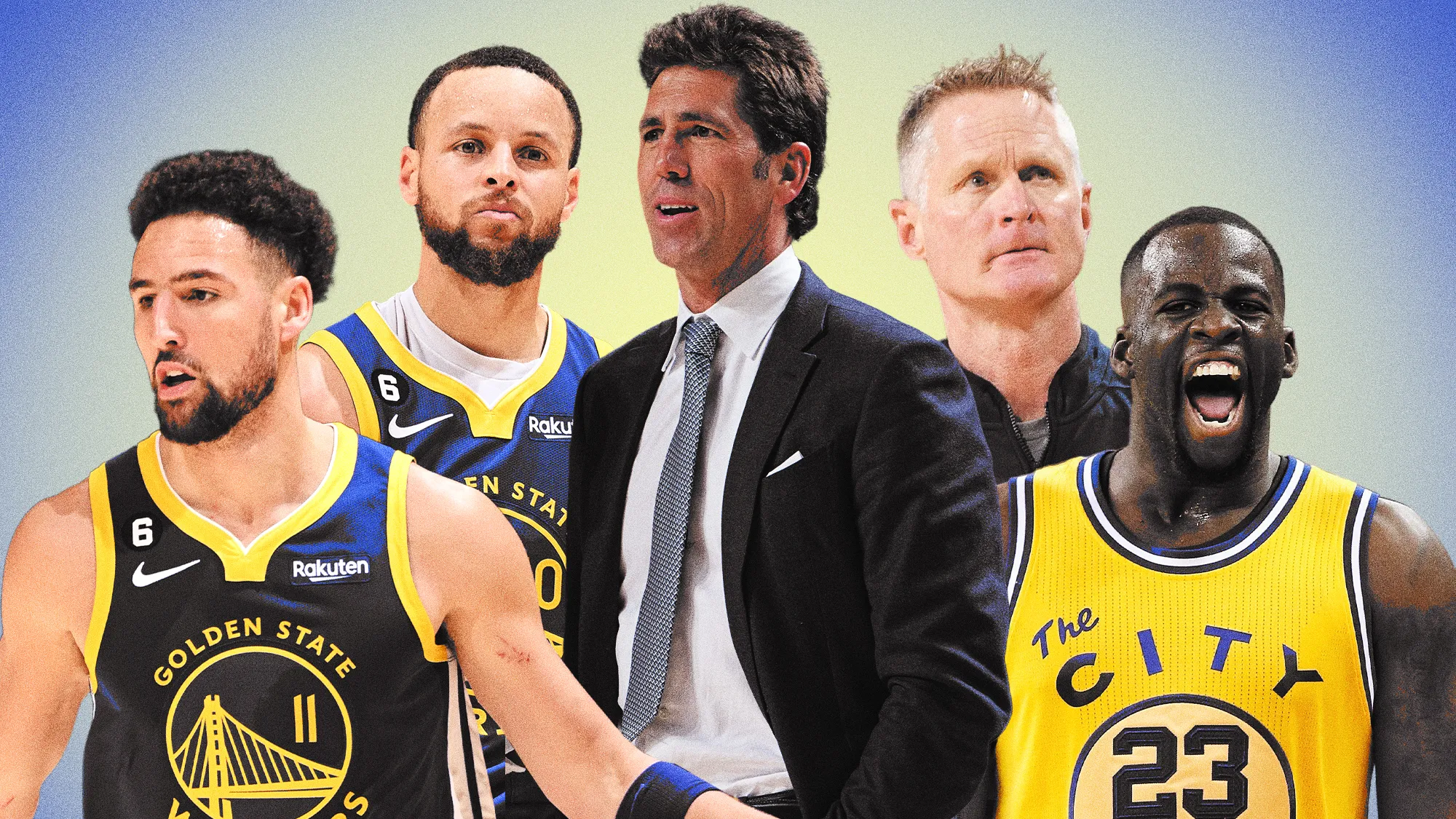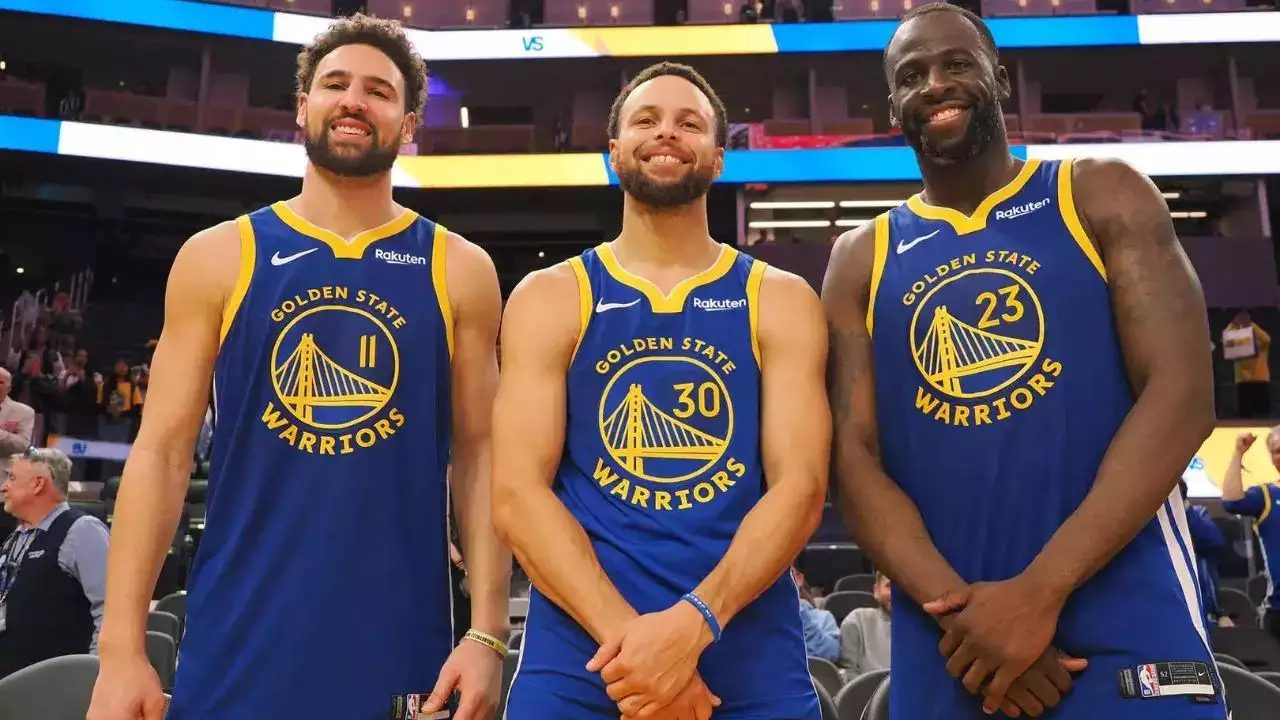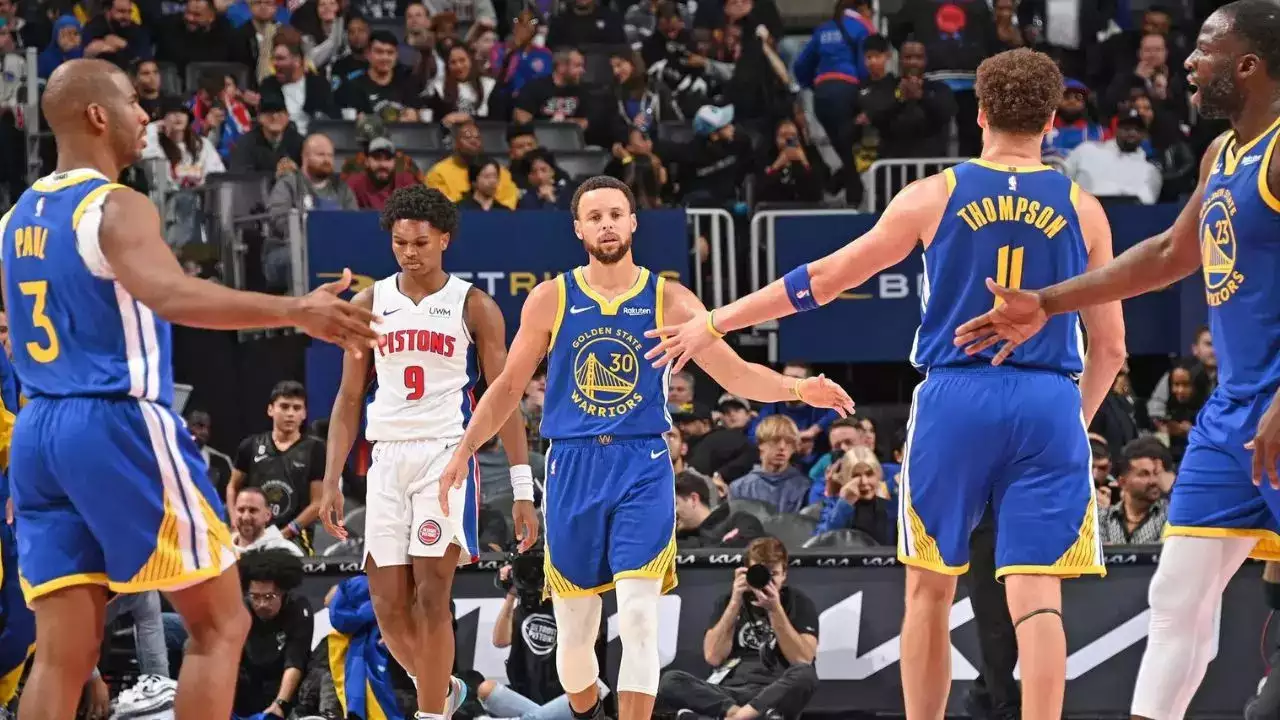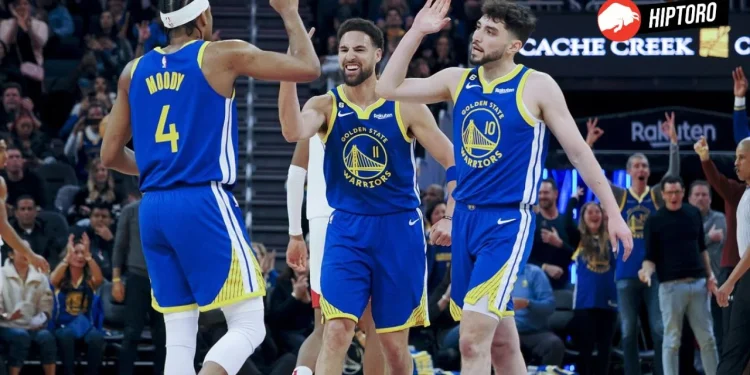In the high-stakes world of NBA trades and team strategies, the Golden State Warriors’ approach to the recent trade deadline has sparked discussions and analyses across the basketball community. Despite the anticipations and pressures, the Golden State Warriors’ decision to stand pat rather than shake up their roster has left fans and critics pondering the wisdom and long-term vision of the team’s management.

The Calm in the Storm: Golden State Warriors’ Trade Deadline Decision
The aftermath of a disheartening 141-105 defeat to the New Orleans Pelicans earlier this year had the basketball world abuzz. Steph Curry’s candid critique, highlighting the “insanity” of expecting different outcomes without changes, seemed to set the stage for a major overhaul.
Yet, as the trade deadline came and went, the Golden State Warriors, led by GM Mike Dunleavy Jr., made a solitary move. This was the trade of backup point guard Cory Joseph and cash considerations to the Indiana Pacers in exchange for a second-round draft pick—a move that also alleviated the team’s luxury tax burden by approximately $11 million.
This strategic restraint begs the question: why did the GS Warriors choose to navigate the trade deadline with such caution? The answers lie not in a single decision but in a series of calculated choices and a belief in the team’s core identity.

Internal Growth Over External Acquisitions
One critical factor in the Golden State Warriors’ approach was the emphasis on internal development over blockbuster trades. The Warriors’ belief in their roster’s potential, even amidst fluctuating performances and standings, showcases a commitment to the group’s chemistry and growth.
This is exemplified by the resurgence of key players like Draymond Green and Andrew Wiggins and the emergence of Jonathan Kuminga as a significant contributor. Jonathan Kuminga’s progress, in particular, has been noteworthy, with the forward elevating his game to new heights in recent months, thus reducing the urgency for external reinforcements.
Stephen Curry acabó anoche con 42 puntos en la victoria de Golden State Warriors ante Indiana Pacers y con un 11/16 en triples
El PICORCITO 🔥
— Pasion Basket (@PasionBasketNBA) February 9, 2024
Financial Prudence and Future Planning
The financial implications of making a significant trade cannot be understated. The GS Warriors’ decision to conserve resources and avoid a hefty luxury tax bill reflects a strategic approach to team building that considers both the present and future. By opting for a more conservative path, the Warriors not only maintain flexibility for future maneuvers but also prioritize the development of their young talents, ensuring a balance between competitiveness and financial health.
Leadership and Cohesion: The Unseen Assets
The impact of leadership and team cohesion in the Golden State Warriors’ decision-making process is profound. Draymond Green’s return and his influence on the team’s dynamics, particularly in fostering relationships with younger players like Jonathan Kuminga and Andrew Wiggins, has been invaluable. Draymond Green’s ability to galvanize the team, coupled with Curry’s visionary leadership, underscores the importance of intangible assets in building a championship contender.

Conclusion: A Calculated Gamble with Eyes on the Prize
The Golden State Warriors’ restrained approach at the trade deadline may have surprised many, but it reflects a deeper confidence in the team’s existing framework and its potential for growth. By focusing on internal development, maintaining financial flexibility, and leveraging the leadership within, the Warriors are betting on their ability to compete at the highest level without sacrificing their future.
As the season progresses, the wisdom of this strategy will be put to the test. Yet, regardless of the outcome, the Warriors’ approach offers a compelling case study of the value of patience, belief in one’s roster, and the intricate balance between immediate success and long-term viability in the fiercely competitive landscape of the NBA.










